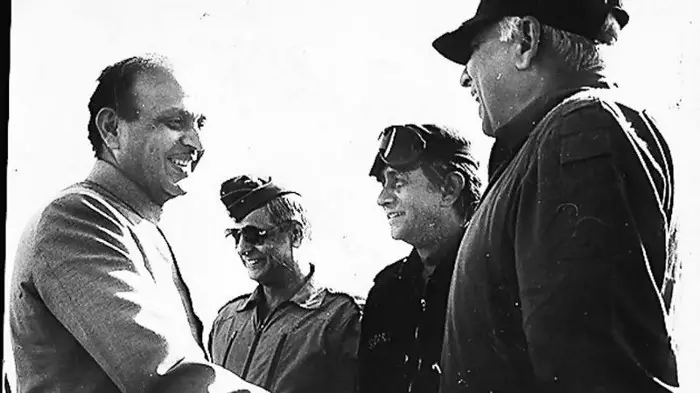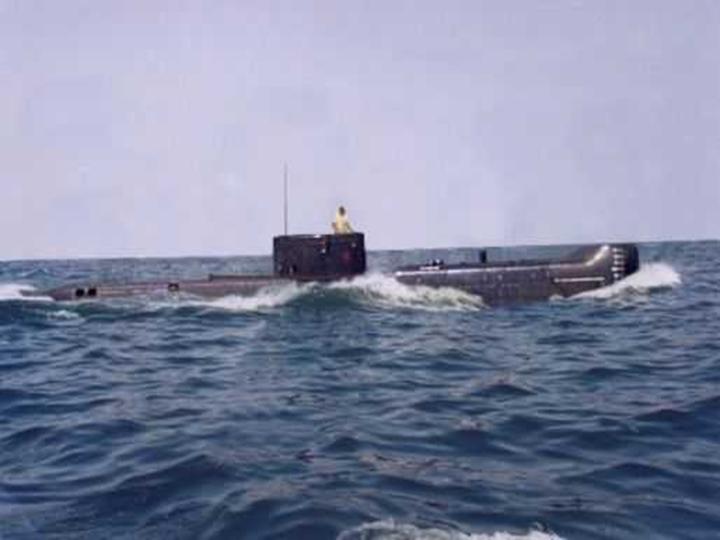The ‘How and Why the Analysis of a War or an Operation’ aids the military planners to fine-tune or formulate a National Security Strategy (NSS) as well as define National Interests which India’s Intelligence agencies and the Ministry of External Affairs (MEA) are struggling with, and it is based on the adage ‘Change is Constant’. Indian Government has not so far released any war records, and it is unknown how MEA and (National Security Advisor (NSA) fine-tune Strategy or can it be assumed that India makes Strategy on the run? Most countries, including the arch-rival China, studies every war, beginning with the Persian Gulf wars, to announce its Strategy to the world.
Operation Brasstacks was India’s biggest strategic and tactical Tri-Service War game fought on a tabletop format in 1986 winter, focusing on the Western front. Subsequently, it was practised on the ground in 1987, involving 400,000 troops, aircraft and ships in the Arabian Sea against Pakistan (Red forces).

Army Chief General Krishnaswamy ‘Sundarji’ Sundararajan requested funds and clearances from Prime Minister and Raksha Mantri (RM, Defence Minister) Rajiv Gandhi and Deputy Defence Minister or the Raksha Rajya Mantri (RRM) Tripos scholar Arun Singh and other Ministries to exercise the moth-eaten ‘War Book’. The ministries were tasked to prepare for High altitude Exercise Chequerboard with the China border in mind and a nationwide Exercise Brassboard which was shelved. Worldwide, the media painted Ex Brasstacks as ‘bigger than any NATO exercise since World War II, a blitzkrieg armour thrust into Pakistan like the 1971 Dash to Dacca’. Mechanisation of the Indian Army is Gen Sundarji’s legacy.
Blue and Red Teams
Operational teams for India in BLUE and Pakistan in RED were housed at Delhi Parade ground near Palam with allocated ORBAT (order of battle), various maps, naval and aerial charts, and intelligence. The computers were not prevalent but were recently pushed by PM Rajiv Gandhi. The maps and the Naval / aerial charts were ‘computerised’ for projection by a U.S. company on large screens for displaying the current progress of the battle in real-time. The Red and Blue teams were segregated and watched over by the Directorate General of Military Training (DGMT), Lt Gen Sunil Rodrigues, who later became the Army Chief. DGMT staff wore umpire or policemen armbands. Indian Army units set up fantastic tented facilities the Army had known so far.
Red team’s devastating plan
The Red Navy’s warfighting was entrusted to the Directorate of Naval Intelligence (DNI) with Gunnery, Missile, Anti Submarine Warfare (ASW) and Navigation specialists under this writer who was the DNI. Lt. Gen VN Sharma, the Commandant of Army’s College of Combat, who became the Army Chief later, a hard taskmaster, was appointed the C-in-C Pakistan. Appreciations and war plans were prepared over three days.
Chiefs Admiral Ram Tahiliani, Chairman Chief of Staffs (COS) Committee and Air Chief Marshal (ACM) La Fontaine took only a peripheral interest calling it ‘Sunder’s show’. So, no senior naval officer arrived for the closed-door rehearsal, and it became the DNI team’s nemesis.
Rear Admiral (Radm) SM Lakhar, the Western Fleet Commander, arrived with his fleet staff armed with plans and were briefed by Naval Headquarters (NHQ). This writer, having been the Fleet Operations Officer, gauged Radm Lakhar’s mind, as he was Ex CO INS Rajput, that the Blue Fleet would rely on Navy’s missile power with P-15 and P-20 missiles (based on INS Trishul, INS Talwar, INS Rana and INS Rajput) with an aggressive dash attack on Karachi, Pasni and Ormara, on the Makran coast, as soon as hostilities broke, just like the lessons learnt in 1971.
The Pakistan Navy (PN) Red team appreciated that its Navy was inferior except in the submarine department. So it planned to keep the Indian Navy (IN) Blue team at bay and bait the IN ships and carrier INS Viraat with Sea Harriers on approach. Red Navy decided not to venture over 165 miles from the coast, which was promulgated as an Exclusion zone. The Red PN ships were stationed in a tight semi-circular patrol. Four PAF Air Force Mirages and F-16 fighters from Air Force Base Talhar based in Badin were on call. Few civil planes meant for reconnaissance were requisitioned along with the French origin Breguet Atlantics equipped with Exocets and torpedoes. These planes were to coordinate, locate and attack IN Blue warships and submarines without a need for identification in the zone. Red Navy assumed that the Blue Navy would look for positive recognition, as seen in the 1971 war.

Three Pakistan Navy Daphné-class submarine (the type that sank INS Khukri in 1971) equipped with Harpoons and torpedoes were deployed 75 km ahead of Red ships, in patrol boxes which were calculated mathematically, as taught in Russian Staff College, and has with 90% success chances, known as a ‘Cordon Sanitaria’.
The Red Navy C-in-C’s plan to patiently draw the Blue Navy towards Makran and later go for three-dimensional Jihadi attacks was approved by Gen Sharma. Pakistan Army (PA) Red Generals led by a friendly Maj Gen Rustom Kaikhusro Nanavatty, this writer recalls among others, were ordered to be aggressive and maul the Blue Army with Red Brigades and Battalions. The meticulous Army Plans and markings on large maps on screens along with distances were appreciated even by a Navy man.
Every war plan needs a withdrawal plan too. The red naval team suggested a red PAF aircraft be equipped with a nuclear bomb (earlier reported by Kuldip Nayyar that Pakistan has nuclear bombs) be used as a threat to get the United Nations (UN) to arrange for a ceasefire as the red Navy has Nuclear, Biological and Chemical Defence (NBCD) as a contingent. The DGMT umpires shot down this proposal.
The Aborted Naval War on the D day at Palam
On D Day, PM/RM Rajiv and Arun Singh arrived driving an SUV gifted by the King of Jordan. The Service Chiefs, few selected from the MOD, MEA and Intelligence, sat in front of a huge screen with rear projectors to listen to the presentations of the Red and Blue plans on camera. The terrain charts and terrains of the Pakistan coastline and the Arabian Sea were computerised along with units marked. Explanations followed how the teams would move in real-time for the umpires to impose casualties and empirically calculate damages, like in computerised wargaming centres. The Rules of Engagement (ROE) were made clear, and many books have been written about Ex Brasstacks.

The PA Red Commanders’ and Air Commodore Vishnu Narain Johri presented their plans. It was smooth sailing until the writer and a Cdr submarine officer presented the RED CORDON SANITARIA plan. The plan looked invincible on paper and revolutionary on the screen, with distances etc., marked along with the range of weapons. At this point, CNS Adm RH Tahiliani was seen conferring with PM and others. It was abruptly announced the Naval war game would not be played, and the Red naval team was sent home. It was puzzling, but the Red naval team realised if the Red Pakistani plan succeeded, it would not be good for Fleets morale, as word leaked to Indian media. VCNS Adm Nadkarni ( later accidental CNS) summoned us and said the war at sea is not played on army screens, and we should not take it personally.
Aftermath
Later, an operations meeting was called, the Red plans were discussed, and a template arrived on how to meet cordons like Cordon Sanitaria and any such Pakistan threat in the future. From unclassified data, it is derived that the Indian Navy decided to become a strong Missile Force with powerful air assets. It speeded up India’s nuclear deterrent programme under Project Advanced Technology Vessel (ATV), which is now translated to Arihant Class nuclear submarines and underwater power. The Navy achieved this aim by the turn of this century with P-20s, Urans, Klubs and Brahmos missiles. Derby missiles were integrated on Sea Harriers and the submarines with Klub missiles. Brahmos missile was selected by the Navy from NPO Mashinostroyeniya as the Soviet Union collapsed and needed money.
